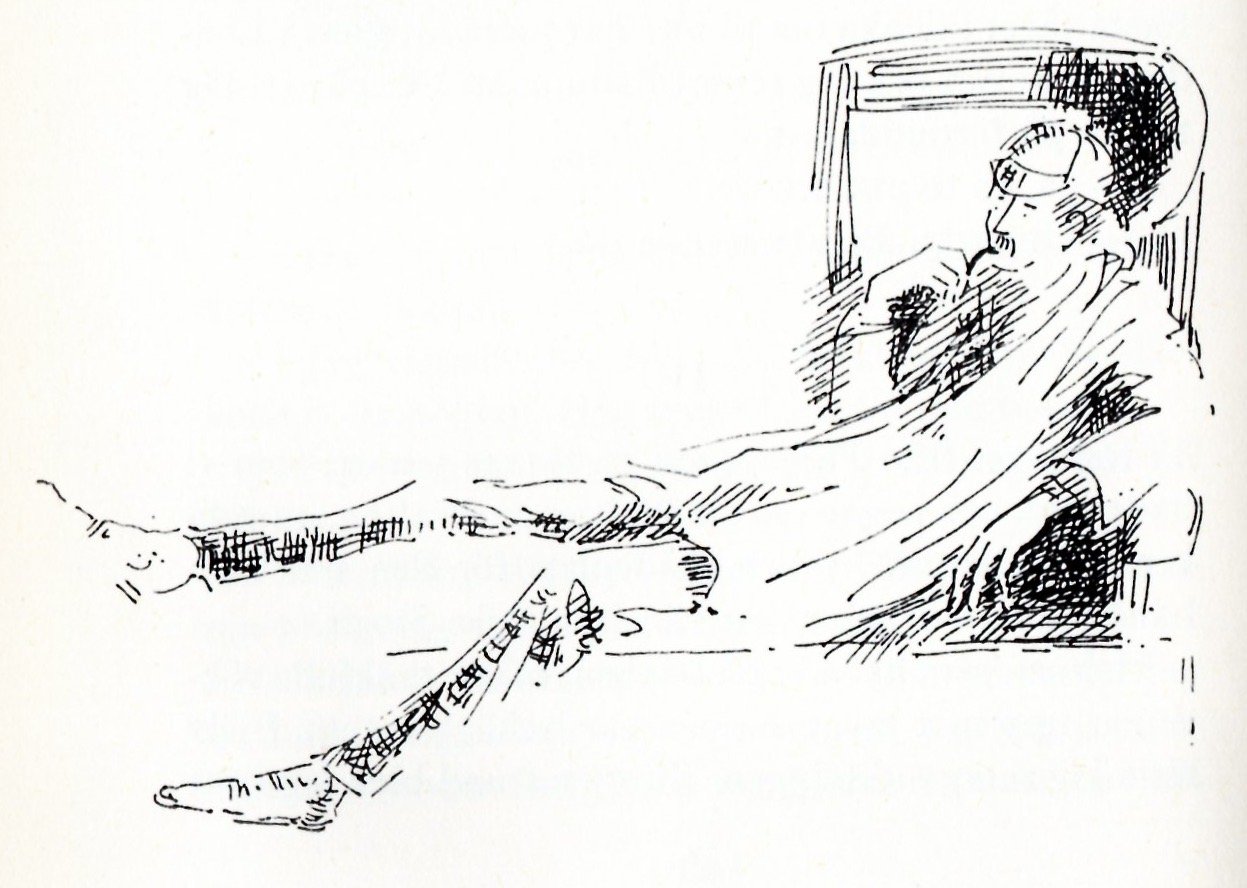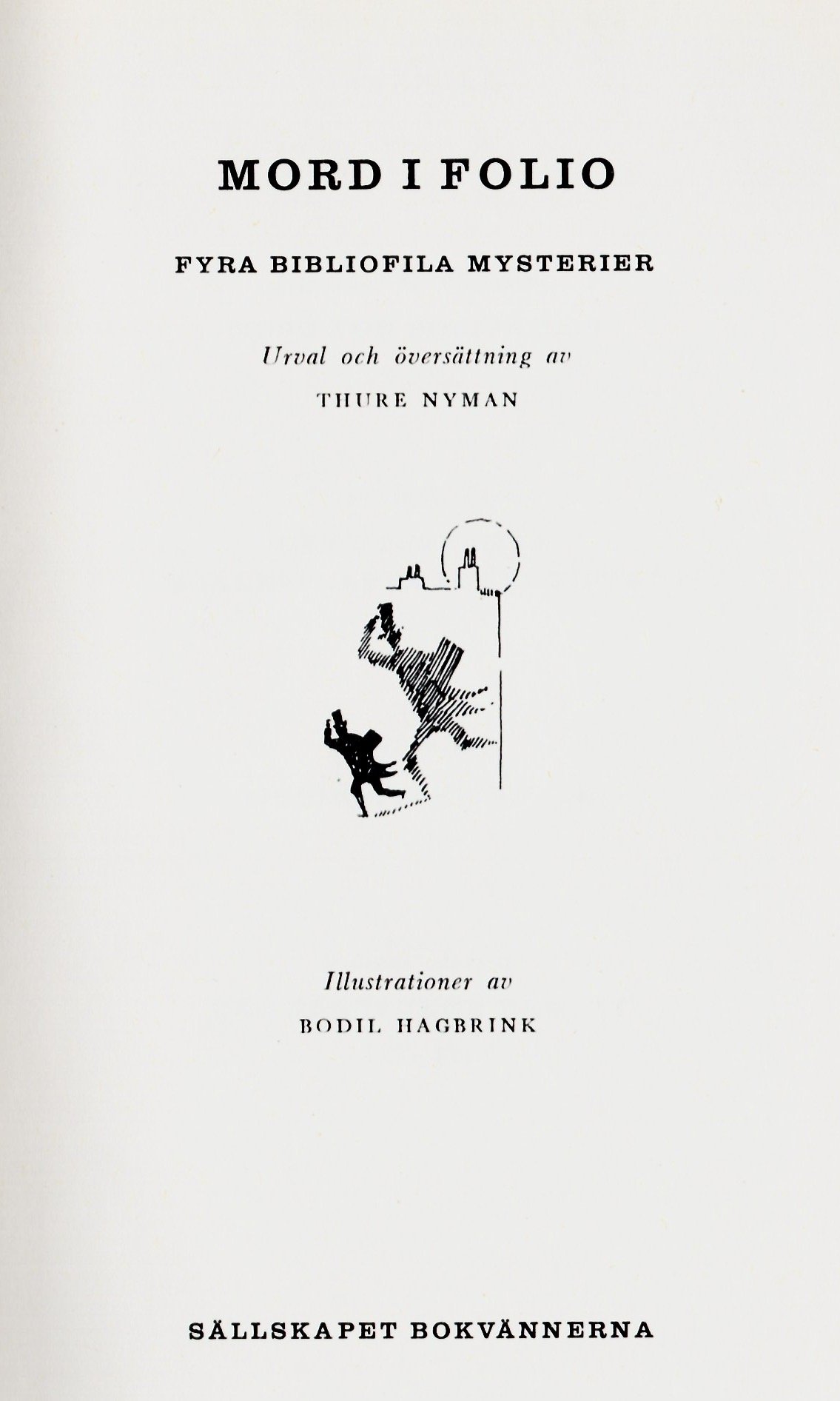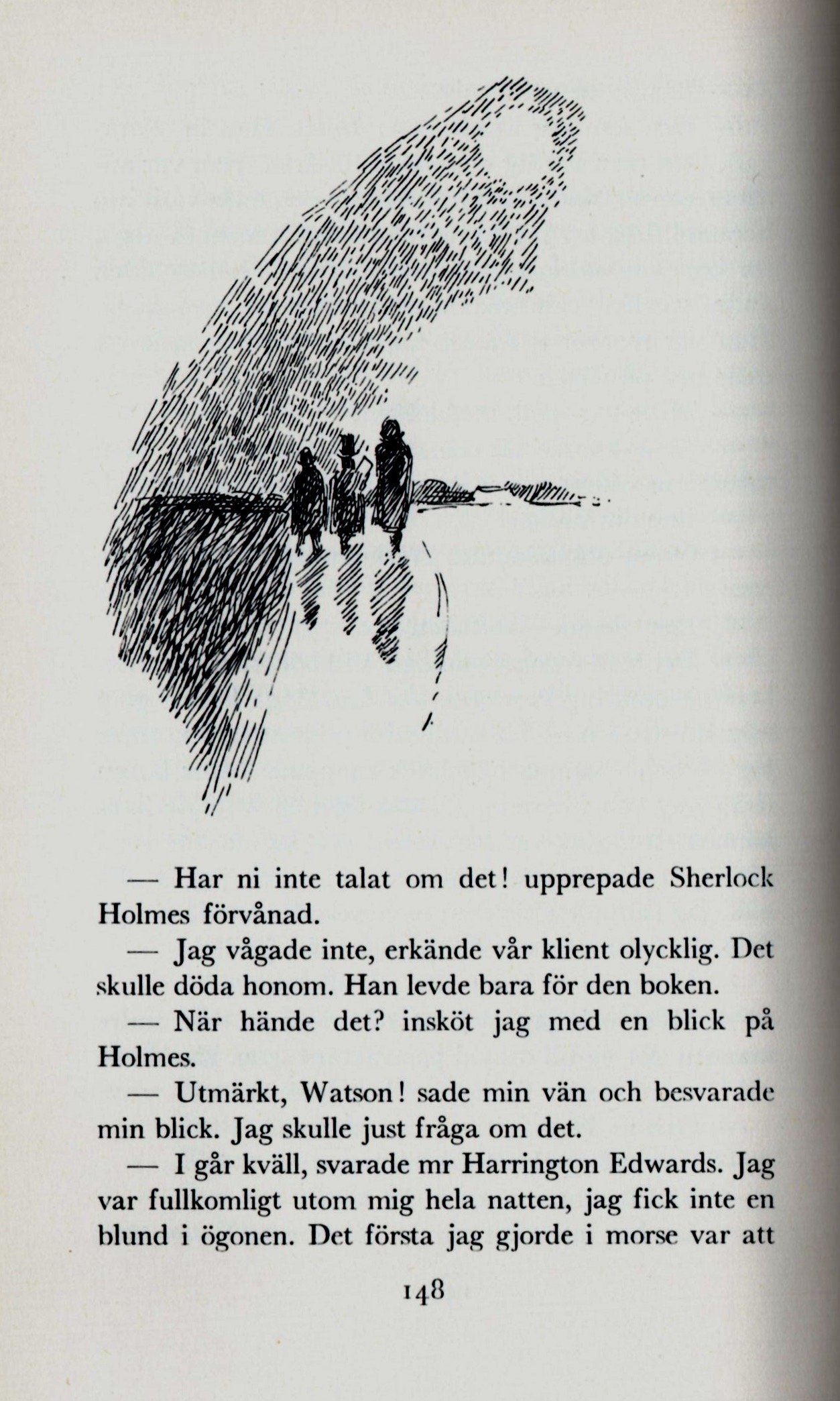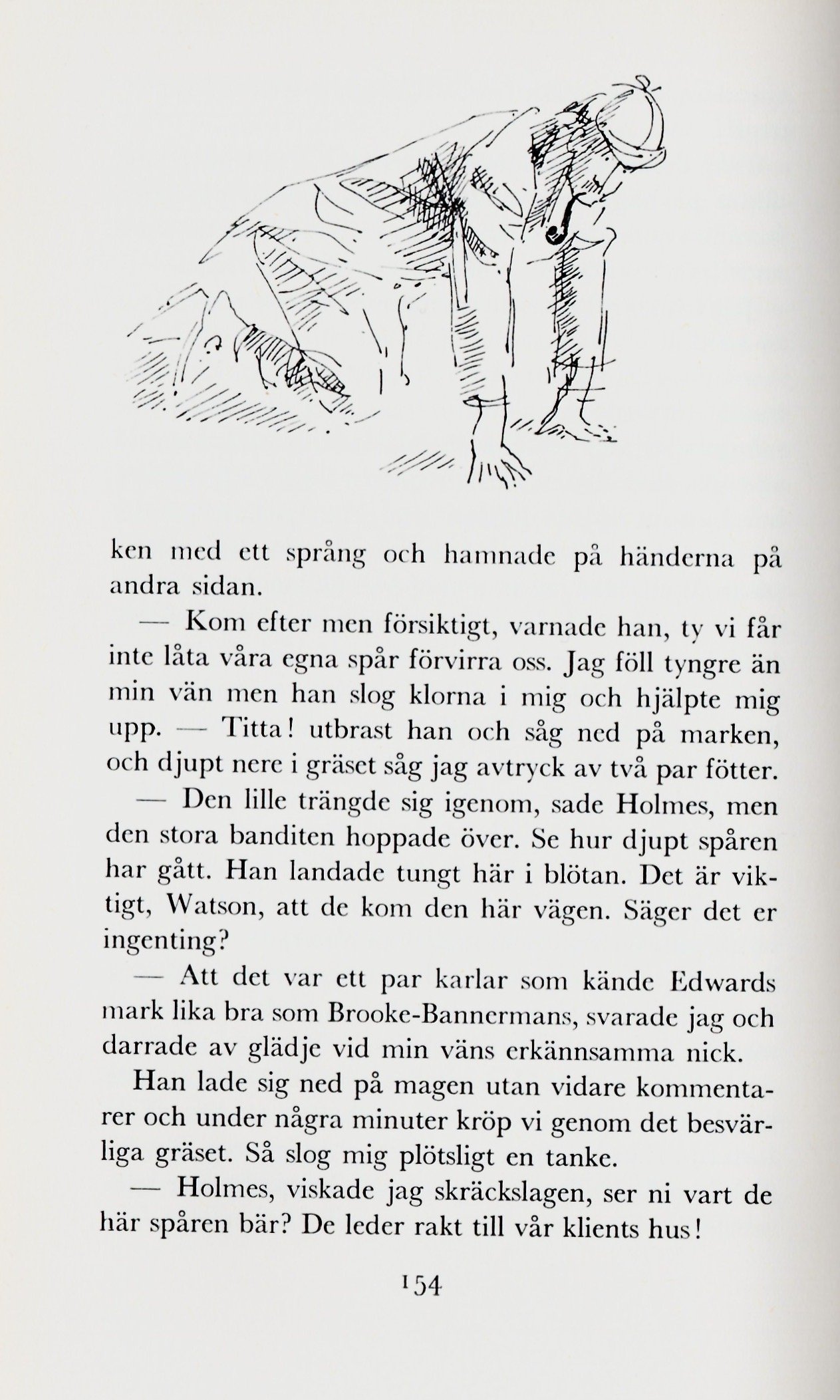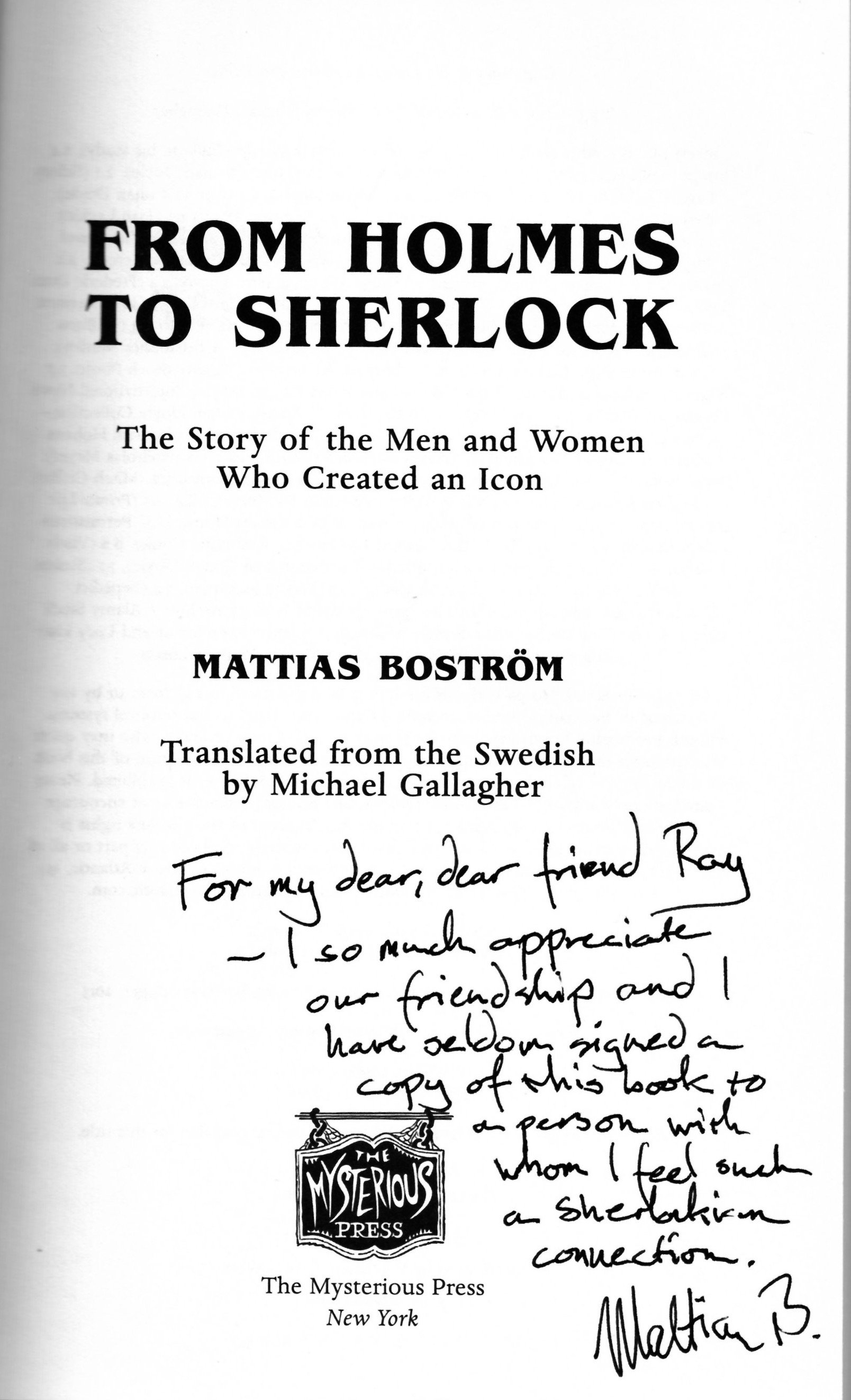Mord i folio
A long-sought volume, a generous gift
A drawing of Sherlock Holmes by Bodil Hagbrink, a Swedish illustrator, for the book Mord i folio, a small anthology of bibio-mysteries published in 1960 by Bällskapet bokvännerna in Stockholm. The book contains a Swedish translation of Starrett’s “The Unique Hamlet.”
I’ve reached the stage in life when most events evoke memories of the past. And being handed a copy of Mord i folio while in New York in January was one of those moments.
Before the world was interconnected through wires and satellites, book buying was done either in person or by mail. You either had to physically visit a book shop or work with the owner via phone or mail, sometimes ordering books from a catalogue, other times working off of want lists. It was a painstaking process.
Finding a particular book was sometimes a challenge. And if the book was a foreign edition with a limited printing, it could have been a process that took years.
Now I can search websites that combine the stock of hundreds of domestic and international dealers. Even with all this convenience, challenges remain.
Such was the case with Mord i folio, a Swedish book which I could find online in European shops. I wanted the book because it has a Swedish translation of Starrett’s famous 1920 pastiche, “The Unique Hamlet.” Online descriptions also said there were line drawings accompanying the story. The drawings were by a Swedish artist and I had never seen them before. Although “The Unique Hamlet” has been republished often since 1920, it has rarely been illustrated. So this particular book was high on my want list.
The problem was finding a dealer who would sell it to me and then ship it to the United States at a price I could afford. I was stumped on several attempts and finally grumbled to my friend Mattias Boström about the whole matter. Mattias is a fellow Baker Street Irregular and author of From Holmes to Sherlock, an international best-selling book that details, in the words of The Washington Post’s Michael Dirda, “how Sherlock Holmes enchanted the world.” Mattias also lives in Sweden. He said he would hunt around a bit for me, and then the matter dropped. COVID came around and the world shut down. And I had honestly forgotten about it.
Until the day before this year’s BSI dinner, when Steven Rothman and his wife Janice Fisher invited me to have breakfast at the Yale Club with Mattias, who was in New York for his first BSI dinner in many years.
After we had settled down to coffee, Mattias pulled out a little bag and inside was a copy of the long-sought volume!
Had Houdini (or Dan Stashower) pulled the Hound of the Baskervilles out of the coffee pot, I would not have been more surprised.
Was it worth the wait? Yes, indeed.
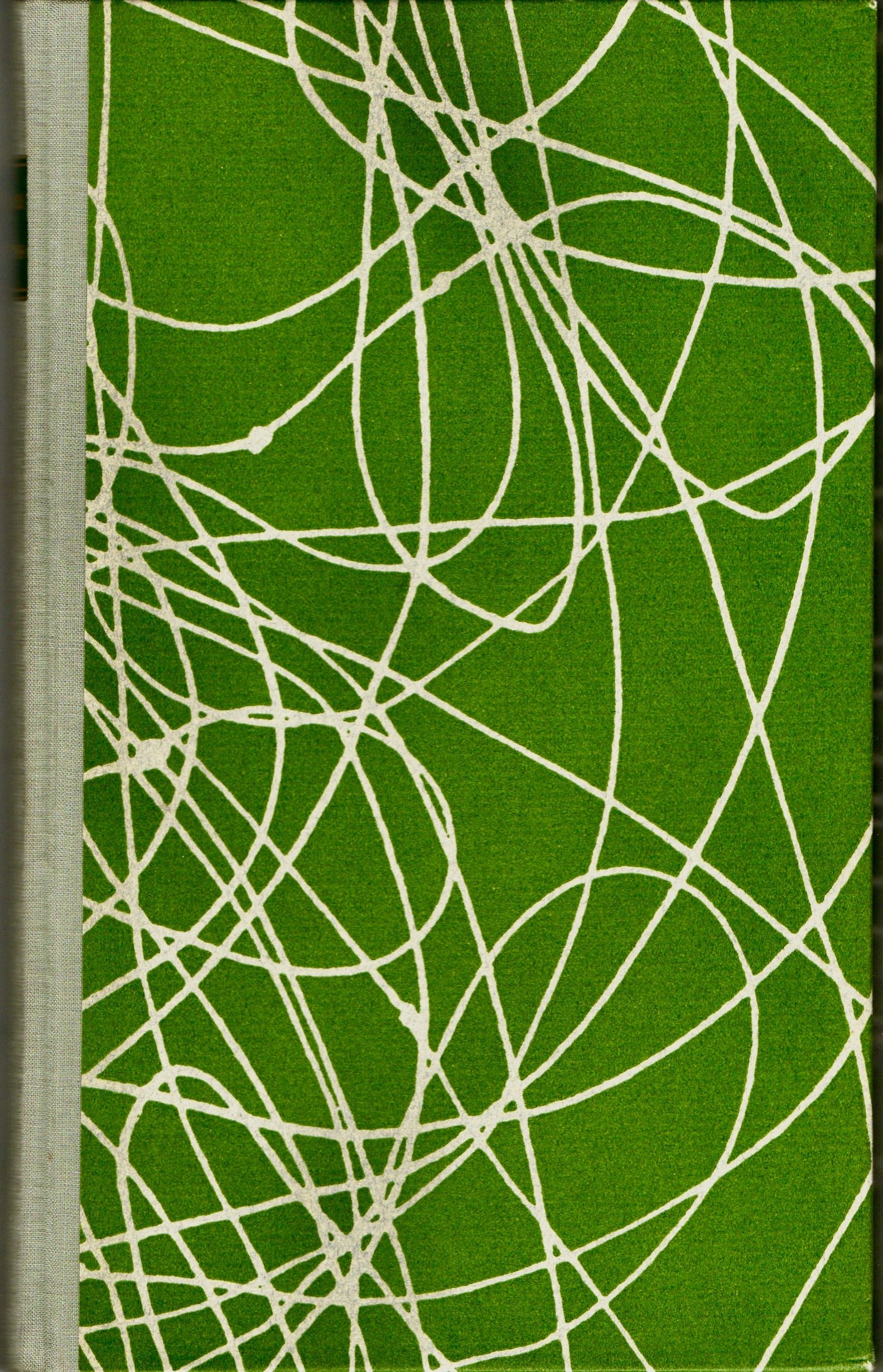
Holding it now, I can appreciate it’s true value. It is clear those behind the book took great care in its production. The little volume had no dust jacket and a dark green cover with lots of whitish swirls. There is a light blue topstain to the pages.
Inside, the text is handsomely presented in Baskerville type (always a nice touch when a Holmes piece is involved.) The endpapers are a green linen. Scattered throughout are Bodil Hagbrink’s illustrations. I don’t know much about Hagbrink, but I have seen his work in several children’s books, including his paintings for Children of Lapland.
The book was limited to 1,000 copies.
Four stories are here, and according to a prefatory note (translated by Google) written by the editor, Thure Nyman, “The selection here has been made from a long list, made available to us by the most eminent expert in the field of literary criminology, the author Tage la Cour, who was also kind enough to contribute the small presentations of the authors that begin each short story.” La Cour is perhaps best known to American audiences for his 1971 book, The Murder Book: An Illustrated History of the Detective Story.
I’ve tried to track down the original appearances of each of the four stories (with the help of Jim Devlin at the Golden Age of Detection Facebook page). The four are as follows:
Lawrence G. Blochman, "The Aldine Folio Murders," published in The Dolphin magazine in 1940.
Lillian de la Torre, “The Missing Shakespeare Manuscript,” published in Ellery Queen’s Mystery Magazine in July, 1947.
Ernest Bramah, “The Virginiola Fraud,” a Max Carrados story, dating from 1923.
Vincent Starrett, “The Unique Hamlet,” privately printed, 1920.
I can’t speak to the quality of the translation. Perhaps someone else can give an assessment.
What I can tell you is that “The Unique Hamlet” has rarely had a more attractive presentation. As you can plainly see, Hagbrink’s illustrations are a delight: light and often humorous.
Just take a look at that image of Harrington Edwards. Here’s how Starrett’s Watson describes his movements:
“He was loping curiously, like a tired hound, lifting his knees high as he ran, and a heavy double watch chain of gold bounced against and rebounded from the plump line of his figured waistcoat. With one hand he clutched despairingly at his silk, two-gallon hat, while with the other he essayed weird gestures in the air in an emotion bordering upon distraction. We could almost see the spasmodic workings of his countenance.”
Accompanying this panel is how Hagbrink illustrated that moment. Also here is the a less hectic scene featuring Holmes, Watson and his client walking in the country to Stoke Porges Manor. There is also a classic pose of Holmes spread out on the ground, hunting for clues.
In all, it’s a delightful depiction of a story that has many cheeky elements to tease both book collectors and Holmes fans.
Mattias had one more gift to bestow.
At my request, he inscribed my copy of his book, From Holmes to Sherlock. You can see the inscribed title page here. It filled me with delight at the time, and does so now.
Thank you Mattias. I hope we will have the opportunity to meet again very soon.

